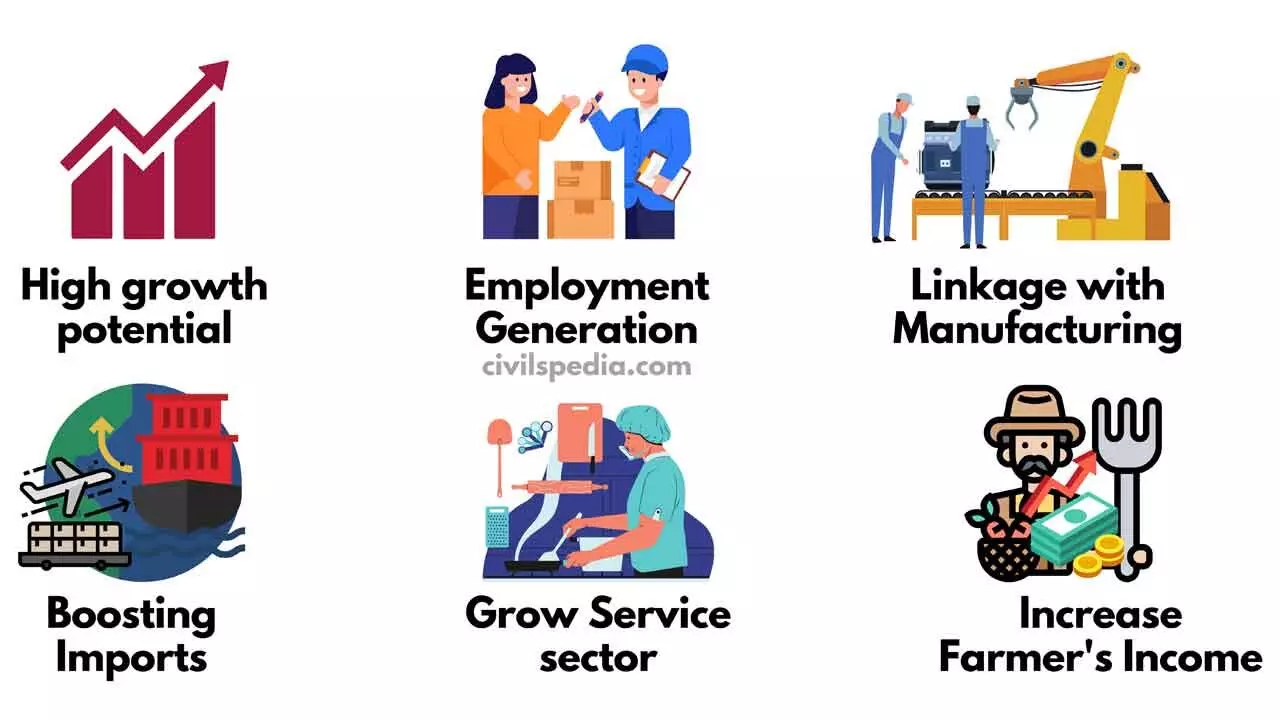Logistics Sector Can Enhance Competitiveness And Drive Manufacturing Growth In India
The logistics industry has attracted significant FDI with Amazon, FedEx and DHL expanding their operations in India
Logistics Sector Can Enhance Competitiveness And Drive Manufacturing Growth In India

As India strives to realise its ambitious economic goals, including achieving a GDP of $5.5 trillion by 2027, the transformation of its logistics sector emerges as a pressing imperative. However, this transformation is not without its challenges.
The development of India’s logistics sector is crucial to enhancing the competitiveness of its manufacturing industry. Through strategic reforms, infrastructure enhancements, and digital integration, the ongoing transformation is expected to reduce logistics costs, increase efficiency, generate jobs, and promote gender inclusion, all while fostering sustainable economic growth.
The logistics industry employs over 22 million people in India, making it a significant contributor to the country’s employment landscape. The government is investing heavily in infrastructure development, including highways, railways, and ports, to improve connectivity and reduce logistics costs. The logistics industry has attracted significant foreign direct investment (FDI), with global players like Amazon, FedEx, and DHL expanding their operations in India.
While infrastructure development is crucial, the future of the logistics sector lies in the integration of technology. When combined with the development of multimodal logistics parks that integrate road, rail, air, and waterways, these advancements will streamline logistics processes and significantly reduce costs and delays.
Logistics plays a pivotal role in the economic development of a country by facilitating the timely and cost-effective movement of goods. Efficient logistics enhances productivity, reduces costs, and contributes to economic growth. It is a critical component of various industries, including manufacturing, retail, agriculture, and e-commerce, influencing their competitiveness and market reach.
India’s strategic geographical location makes it a key player in regional and global trade, further emphasizing the importance of a robust logistics network. The industry comprises various segments, such as transportation, warehousing, freight forwarding, and third-party logistics (3PL) services, each contributing to the overall supply chain ecosystem.
The logistics industry in India has witnessed significant growth in recent years, driven by economic reforms, globalization, and the rise of e-commerce.
The demand for India's logistics sector is expected to rise significantly due to several key factors. India's projected GDP growth of $ 26 trillion by fiscal year 2048 (with US$ 6 trillion by 2030) and the goal of boosting merchandise exports to $ 1 trillion by 2030 will create substantial opportunities for the transport and logistics industry.
Projections suggest that the sector will grow at a CAGR of 4.5 per cent from 2022 to 2050, reaching 15.6 trillion tonnes. In 2023, the market size was $282.3 billion, and by 2032, it is predicted to reach $ 557.4 billion with a growth rate of 7.85 per cent from 2024 to 2032.
Freight movement in India is predominantly reliant on road transportation, accounting for 66 per cent of goods moved in ton-km, followed by rail (31 per cent), shipping (three per cent) and air (one per cent). To facilitate cargo transport, India has established an extensive support infrastructure network, including 129+ inland container depots, 168+ container goods stations, and warehouse capacity exceeding 300 million square feet.
The country’s road network has expanded significantly, increasing from 62.15 lakh kilometers in FY21 to 66.71 lakh kilometers as of April 2024, reflecting ongoing efforts to bolster the country's transportation infrastructure.
The expansive 7,500 km coastline, surrounded by sea on three sides, hosts 200 minor/intermediate ports and 12 major ports, which collectively manage 65 per cent of the country's trade value and 95 per cent of its trade volume. The coast presents many opportunities for cargo movement, with estimated total cargo volume projected to surpass 250 million tonnes per annum (MTPA) by 2025.
Air transport represents less than two per cent of the total modal mix, primarily serving time-sensitive commodities like pharmaceuticals, healthcare products, and electronics due to its higher cost compared to other transportation modes. For non-time-sensitive freight, alternative transport methods are generally more cost-effective.
A warehouse is a crucial element of corporate infrastructure and a key facilitator in the global supply chain. The Indian warehousing market is projected to reach Rs. 2,872.10 billion, expanding at a CAGR of 15.64 per cent from 2022 to 2027. Over the years, the warehousing industry has experienced increased demand and supply, gaining significant traction.
In order for India's manufacturing industry to be globally competitive, it needs to be upgraded and reformed. The absence of effective, flexible and targeted policy support, apart from supportive measures like infrastructure and education development, will lead to the sector's stagnation.
For major efforts like Make in India and Skill India to succeed and for the manufacturing sector to grow, the government must address the root causes. Development of India's logistics sector is vital to enhancing the competitiveness of its manufacturing sector. The ongoing reforms, through strategic policy reforms, infrastructure development, and digital integration are poised to transform the country’s logistics landscape.

